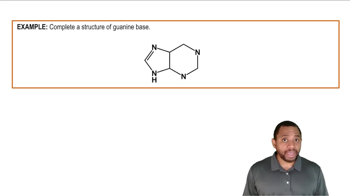The structure of the amino acid lysine (in its uncharged form) is shown below.
a. Which amine groups would be able to participate in hydrogen bonding?
 Verified step by step guidance
Verified step by step guidance Verified video answer for a similar problem:
Verified video answer for a similar problem:



 1:32m
1:32mMaster Acid-Base Reaction Concept 1 with a bite sized video explanation from Jules
Start learning